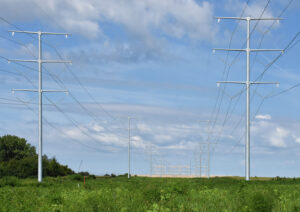What’s driving the transmission plan
 Since ATC was formed over two decades ago, the energy landscape has rapidly evolved. Our customers and other organizations across the Upper Midwest are pursuing new energy policy goals that are affecting changes to generation sources. At the same time, we are experiencing an increased load growth, more severe weather and the continual electrification of buildings and vehicles.
Since ATC was formed over two decades ago, the energy landscape has rapidly evolved. Our customers and other organizations across the Upper Midwest are pursuing new energy policy goals that are affecting changes to generation sources. At the same time, we are experiencing an increased load growth, more severe weather and the continual electrification of buildings and vehicles.
To address these challenges, we are developing efficiencies and technology that strengthen the grid during this time of transition to provide a safe and reliable pathway for all forms of power.
At the same time, we also evaluate the lifecycle maintenance of our existing assets, focusing on an asset management strategy that complements new infrastructure projects to achieve greater benefits and cost savings. Our effective management of transmission assets also complements our planning strategy for electric reliability and economic benefits.
In a collaborative process, our asset management and planning teams work with other functional groups and stakeholders to achieve the best solutions to meet our customers’ needs. Asset management staff monitor the system through maintenance and inspection programs to identify issues related to equipment performance or condition. Equipment deemed inferior and underperforming is discussed internally and with customers to determine if replacement in kind is required and if other reliability needs exist within the geographic area. System needs are evaluated using various options to determine the best means of maintaining reliability and achieving optimal benefits from our investments. These discussions with customers occur at 10-Year Assessment stakeholder meetings and MISO System Planning Meetings.
System improvement need drivers:
- Generation Interconnections of new or retiring generation – Changes in both fossil fuel and renewable generation connected to the transmission system impact the location and amount of power flowing as well as system stability.
- Economics – Greater access to the wholesale energy marketplace provides economic opportunities to utility customers.
- Enhanced North American Electric Reliability Corporation (NERC) reliability standards – A greater degree of redundancy and analysis is required to assure reliable, resilient operation.
- Public policy – Renewable energy mandates and pending air quality regulations affect how the transmission system will be built and used.
- Asset renewal – Replacing equipment approaching the end of its useful life improves system safety and performance.
- Distribution Interconnections – Changes in how our customers distribute electricity to consumers require new or modified transmission facilities.
- Load changes – Large new requests from major technology companies will add unprecedented loads to our system and could transform the energy landscape.
- New technologies – Synchronized phasor measurements, demand‑side management and distributed energy resources affect how the grid is planned and operated to maintain reliability.
- Communications – Improvements in communication technology, such as fiber optics, are incorporated to support an ever‑increasing need to observe and control what is happening on the transmission system in real time.
